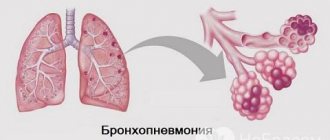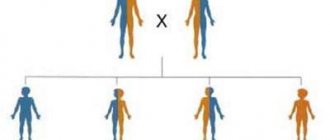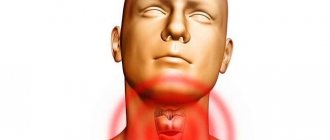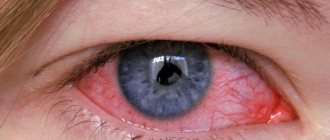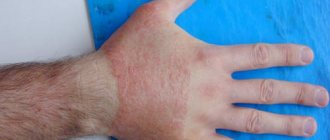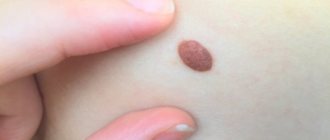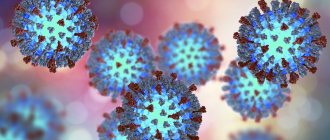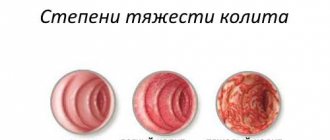Diseases of the inner ear are the most common pathologies of the auditory organs. All diseases of the internal hearing system have similar symptoms, and their most severe complication is the acquisition of absolute hearing loss.
In order to prevent such a sad turn of events, you need to know what symptoms these diseases have, what is their cause, and what methods can cure pathologies of the inner ear most quickly and effectively. Let's consider all these issues in detail in the article.
Symptoms
Symptoms for different diseases may vary, but there are several basic ones that can accurately determine whether you need to see a specialist and treat your ears.
- Pain, burning in the ears. The nature of the pain can be anything.
- Itching inside and outside.
- Hearing impairment.
- Discharge of fluid from the ears.
- Nausea, dizziness.
- Temperature increase.
- Redness, swelling of the ear.
- General weakness.
Some of these symptoms may indicate other diseases, so diagnosis will help determine whether the cause is in the ear or these sensations are a consequence of other diseases.
Important! If such symptoms appear, you should consult a doctor.
Otitis
Otitis is an inflammatory disease of the middle and outer ear. The severity of the inflammation depends on what virus or bacteria affected the ear. This condition can be extremely dangerous, so treatment must be started immediately. Otitis is common in children and adults.
Otitis is characterized by severe, “shooting” pain in the ear, fever and other symptoms of inflammation in the body. A couple of days after the onset of the disease, pus begins to discharge from the ear, with its appearance the temperature decreases and severe pain disappears.
If the course is unfavorable, the pus will not come out, but will accumulate inside and spread inside the skull, which can cause otogenic sepsis, meningitis or brain abscess. This is life-threatening.
Causes of the disease
Otitis media is often associated with other diseases of the throat and nose, in which pus can get higher into the ear.
- Complication of viral and colds of the respiratory tract.
- Diseases of the nose, for example, adenoids.
- Mechanical damage to the auricle.
- Severe hypothermia.
- Neglected sulfur plug.
Diagnostics
Diagnoses otitis media by ENT. A competent doctor will be able to identify the disease without additional research, during an examination. If an internal form is present, other diagnostic methods are used:
- X-ray;
- CT scan;
- bacterial culture, this analysis is needed to select suitable antibiotics.
Treatment at home
At the first suspicion of otitis media, you need to contact an otolaryngologist, otherwise the acute form may become chronic and inflammation will recur. If you can’t visit a doctor right away, you can take painkillers, for example, Nurafen, and antihistamines that relieve swelling.
You can also make a compress using vodka. Lightly wet the cotton wool with room temperature liquid and secure it to your head with a bandage. The compress should warm; pure alcohol cannot be used for this purpose.
Important! You cannot use other home remedies and various herbal candles, you cannot drip anything into the ear. This can lead to the spread of the abscess, as a result of which the person can go deaf or develop inflammation of the brain and become disabled.
The main treatment for otitis is drops, in some cases antibiotics are used. Several groups of drugs are used.
- Antibiotics: Normax, Otofa, Sofradex, Flemoxin Solutab and others, depending on the degree of damage and type of otitis.
- Antiseptic – Miramistin;
- Candide, Pimafucin, other ointments for fungi, if otitis media was caused by them.
- Ear drops: Otipax, Otinum, Otizol. They have an analgesic and anti-inflammatory effect.
Important! Only the attending physician can prescribe medications.
If the pus does not leave the ear, there is a risk of developing dangerous complications, therapeutic treatment does not help or it is too late to take medications, surgery is prescribed - paracentesis.
A small incision is made on the eardrum through which the pus comes out. Immediately after the operation, the patient feels relief.
Treatment of internal otitis, especially if it causes complications, can only take place under the supervision of doctors, preferably in a hospital.
Complications
The consequences of ear diseases include:
- deafness;
- facial paralysis;
- the appearance of tumors;
- hearing loss;
- penetration of infection into the membrane of the brain;
- complication of ear pathologies;
- brain sepsis;
- meningitis.
Ignoring the symptoms of the disease can affect a person’s health, lifestyle, or lead to death. At the first symptoms of ear diseases, you should go to the doctor and not self-medicate.
Complications of ear diseases depend on the type of disease. Inflammatory processes lead to infection of other ENT organs, resulting in the development of pathologies such as sinusitis, frontal sinusitis, pharyngitis, and tonsillitis.
Complications of otitis media and fungal infections:
- Myringitis is damage to the eardrum.
- Mastoiditis is inflammation of the mastoid process.
- Labyrinthitis is inflammation of the labyrinth.
- Facial nerve paralysis.
- Venous sinus thrombosis.
- Transition to chronic form.
- Relapses.
If ear diseases are treated incorrectly or untimely, the infection enters the bloodstream and infects internal organs. The greatest danger arises when the membranes of the brain become infected - the risk of developing encephalitis, meningitis or brain abscess increases. That is why any manifestations of ear diseases require an immediate visit to an otolaryngologist.
Diseases of the human auricle lead to inflammation of the cartilage tissue and the development of perichondritis. A long-term inflammatory process affecting the cartilage provokes necrotic changes, which can lead to deformation of the shell.
Some diseases of the human ear lead to partial or complete hearing loss, which can only be eliminated surgically - stapedoplasty or hearing aids. And not in all cases complete recovery is possible.
If you start treatment and do not pay attention to ear diseases, then there is a high risk of developing internal otitis media, which affects the peripheral vestibular apparatus, and in the future this will be the main cause of complete hearing loss. Another name for the disease is labyrinthitis. In the presence of internal otitis, there are several symptoms:
- My head is spinning.
- Vomit.
- Nausea.
- Disturbances in balance.
- Purulent discharge.
In addition, an inflammatory disease that is not treated in time can develop into meningitis or acute mastoiditis. If you notice any of the listed symptoms, do not try to cure the disease yourself, but immediately seek medical help.
Sinusitis
Sinusitis is not a disease of the ear specifically, but can cause pain in the ear. There are several types of sinusitis: sinusitis, frontal sinusitis and others. With this disease, the mucous membranes of the maxillary, frontal, ethmoid and sphenoid sinuses become inflamed.
With sinusitis, a runny nose, severe headache, a feeling of squeezing, pain and noise in the ears, blocked ears, and impaired sense of smell appear. If acute sinusitis starts, it can become chronic. This disease can also cause otitis media.
To correctly diagnose and identify inflamed sinuses, a number of studies are performed, including X-rays, MRI or CT.
Causes of the disease
Sinusitis occurs for various reasons.
- Colds.
- Allergic reactions.
- Abuse of nasal sprays in the treatment of a runny nose.
- Asthma.
- Fungus.
- Contaminated air.
- Bad habits such as smoking.
- Congenital anatomical features: structure of the nasal septum.
Most of the factors that provoke sinusitis can be influenced by the person himself.
Treatment
In case of acute sinusitis, you should immediately consult a doctor to prescribe therapy. Antibiotics are prescribed if sinusitis is microbial in nature, otherwise they will be useless.
- Nasal drops. They should not be used for a long time. The mildest effects are nasal drops based on essential oils - Pinosol, Sinuforte. If sinusitis is caused by allergies, then Vibrocil or Loratadine, Rhinopront are suitable.
- Antiseptic drugs. They will destroy the infection and prevent the spread of inflammation. Dioxidin, Miramistin, Furacillin are usually used.
- Means for rinsing the nose. For treatment at home, a solution is made from water and salt (one teaspoon of the substance is needed per glass of hot water), but special mixtures can be purchased in pharmacies: Aquamaris, Dolphin.
- Antibiotics. They are used if sinusitis is caused by bacteria. Depending on the degree of damage, the shape and variety are selected. The most commonly used are Amoxilav, Ampiksid, Fusafungin.
- Nonsteroidal painkillers. These include ibuprofen-based medications. Will help with pain in the head and ears.
Important! You cannot take antibiotics on your own.
Punctures are used in extreme cases when therapy does not help. A properly performed operation will quickly bring relief, but it happens that it only provokes a chronic disease.
Surgery
Statistics show that purulent inflammation of the auricle in most cases requires surgical intervention, because it is very important to promptly clear the tissues of purulent masses and remove areas of necrosis, if any.
The procedure is usually performed under local anesthesia (the patient remains conscious). First, the doctor makes one or more incisions behind the ear (usually parallel to the ear fold), after which the pus is completely removed and the surgical field is cleared of dead tissue. Afterwards, a special tube is inserted into the wound to provide drainage, after which a bandage is applied. Over the course of several days or weeks, the wound is regularly washed with antiseptic solutions.
In the event that the disease ends in the destruction of cartilage tissue, sometimes additional plastic surgery is required to restore the natural shape of the ear.
Otomycosis
Otomycosis is a fungal disease of the ear. More often there is an external form, sometimes an internal one. This condition is caused by mold.
At the onset of the disease, the main symptom is itching and congestion. Then discharge begins, the ear swells, and the skin becomes dry. Over time, the amount of discharge increases, and attempts to clean it with cotton swabs lead to the infection penetrating deeper.
Causes
The disease is caused by infection with spores of a fungal pathogen, but the disease occurs only under certain conditions.
- Metabolic disease.
- Weakened immunity, hypovitaminosis.
- Long-term use of antibiotics or corticosteroid drugs.
- Radiation therapy.
- Mechanical damage to the ear.
- Swimming in open waters.
Sometimes these factors are combined.
Treatment
For external otomycosis, they try to use only local drugs; for fungal otitis of the middle ear, they immediately begin therapy with internal ones. Then local medications only complement the treatment.
Using a special probe, the specialist removes the discharge with an antimycotic drug. Miramistin is also used for disinfection.
Systemic drugs for otomycosis are as follows:
- Nystatin;
- Levorin;
- Mycoheptin;
- Nitrofungin;
- Kanesten;
- Exoderil;
- Nystanin ointment and others.
The necessary medications are selected by the doctor depending on the severity of the lesion and the form of the disease.
Important! Treatment of otomycosis must be carried out under the supervision of a specialist, otherwise the fungus may return.
Classification of perichondritis
Classification allows you to select the most appropriate therapy and quickly relieve the patient of unpleasant symptoms. Without it, it is impossible to adequately assess the severity of the condition and the possible risks of complications.
As already mentioned, there are two forms - primary, when the infection enters the body from the external environment, usually due to injury, and secondary, when the culprits are diseases hiding inside the human body.
According to the severity of the flow, they are distinguished:
- Serous is a small benign lesion with mild symptoms. Occurs with traumatic lesions and is characterized by the accumulation of serous fluid in the tissues of the ear.
- Purulent - characterized by a severe course, accompanied by the accumulation of pus and pronounced symptoms. The lesion extends to the entire area of the outer ear, except for the lobe, and often causes complications.
There are also types of perichondritis based on the duration of the course - acute, rapidly developing, but easily treatable, and chronic - therapy is difficult, so it often recurs.
Adhesive middle ear disease
Adhesive disease or otosclerosis is an inflammatory process in the middle ear, leading to adhesions and hearing loss. More common in older people.
The main symptom is progressive hearing loss, tinnitus, and congestion. After examination by an otolaryngologist and audiologist, a correct diagnosis is made and treatment is prescribed.
Important! If your hearing worsens, you should immediately consult a doctor; changes in the ear may be irreversible.
Causes
- Chronic otitis of the middle ear.
- Tubotitis in the chronic stage.
- Rhinitis, sinusitis, tonsillitis, other diseases of the nasopharynx.
- Surgical interventions in the nose and pharynx.
- Barotrauma is damage to ear tissue as a result of temperature changes.
- Incorrect use of antibiotics.
Treatment
Treatment of otosclerosis is complex. It includes blowing out the auditory canals, massage of the eardrum, injection of enzymes, sometimes surgical intervention, prosthetics if the hearing is severely impaired. The following drugs are used in treatment:
- Chymotrypsin;
- Lidaza;
- Hydrocortisone.
These substances are directly injected behind the eardrum using a syringe without a needle or catheter.
Diagnostic methods
Diagnosis of the disease is carried out by an otolaryngologist. It includes a set of activities. It may be necessary to be examined by other doctors: a neurologist and an infectious disease specialist.
Otoscopy
During otoscopy, the auricle, postauricular area of the external auditory canal, including the mastoid process and the eardrum are examined. Lymph nodes are palpated to determine their possible enlargement. Otoscopy is used when pathology develops against the background of acoustic trauma or the spread of the inflammatory process from the middle ear to the inner ear.
Vestibulometry
Vestibulometry is a set of tests that can detect pathological changes in the vestibular apparatus. Several functional tests are used:
- caloric test;
- rotational test;
- pressor test;
- otolith reaction;
- finger-nose test;
- index test.
Vestibulometry is used as an auxiliary method in combination with other diagnostic methods.
Audiometry
Audiometry is a method that allows you to examine hearing and determine hearing sensitivity. To carry it out, an audiometer is used. The study is carried out in a special soundproof room. Audiometry can be tonal, speech, or carried out using a tuning fork.
Electronystagmography
Using electronystagmography, a qualitative and quantitative assessment of nystagmus is performed. To do this, the difference in electrical potential between the cornea and the retina is recorded. The obtained data undergoes computer processing, which makes it possible to determine the parameters of nystagmus (quantity, amplitude, frequency, speed).
Injuries
Ear injuries are mechanical injuries that can occur for a number of reasons. In case of injury, the outer ear is damaged, the eardrum and auditory tract may be affected, and if this organ is damaged, nausea and severe dizziness are also observed.
The main danger of injury is the development of inflammatory processes that lead to otitis media and the likelihood of hearing loss. Therefore, it is important to quickly provide first aid and see a specialist.
In case of injury to the outer ear, all areas of damage must be carefully treated using disinfecting liquids, for example, miramistin or chlorhexedine. Anti-inflammatory non-steroidal ointments can be used. If inflammation occurs, you need to consult a specialist.
Barotrauma
Barotrauma is damage to the middle ear or eardrum due to pressure drop. The main thing is to prevent infection; antibiotics are often prescribed immediately. A person with barotrauma should take vasoconstrictor drops in the nose, or take painkillers to reduce pain.
If the damage is severe and complications arise, then reconstructive operations are performed; if hearing loss develops, consultation with a hearing prosthetist and selection of a prosthesis is required.
Similar tactics are used for injuries to the inner ear.
Important! In case of injuries, first aid should be provided as quickly as possible, otherwise complications are more likely to develop.
Neuritis
Neuritis is an inflammation of a nerve that can cause loss of sensation, dull headaches, ear pain, and decreased sensitivity.
Typically, neuritis is caused by previous injuries and infections, poisoning with toxic substances; it can occur during pregnancy, diabetes, rheumatism and other diseases.
This disease goes away on its own within a few weeks. You just need to follow the general recommendations for a complete recovery.
The diet of a patient with neuritis should include more fresh vegetables and fruits, and the diet should be balanced. With your doctor's permission, you can take a course of B vitamins.
Causes
What factors provoke the development of pathologies of the inner ear.
Birth defects. It can be:
- prematurity;
- bad heredity;
- fetal underdevelopment;
- intoxication due to bad habits of the mother.
Birth injuries can also be classified as congenital pathologies.
Sometimes traumatic brain injuries provoke the development of diseases of the inner ear. A foreign body stuck in the ear canal can also cause inflammation. This happens more often in children.
Infectious diseases are the most common factor that provokes pathologies of the inner ear. In addition to common otitis media and colds, viral and bacterial infections, this category can also include typhus, mastoiditis (read more about what mastoiditis is), tuberculosis, meningitis and other diseases.
Loud noise . Severe acoustic exposure can also cause labyrinth pathologies. As a result of such exposure, rapid wear of the auditory receptors occurs.
In addition to the above, the occurrence of ear pathologies is influenced by neurological pathologies, vascular diseases, cervical osteochondrosis, and even life in a state of permanent stress.
